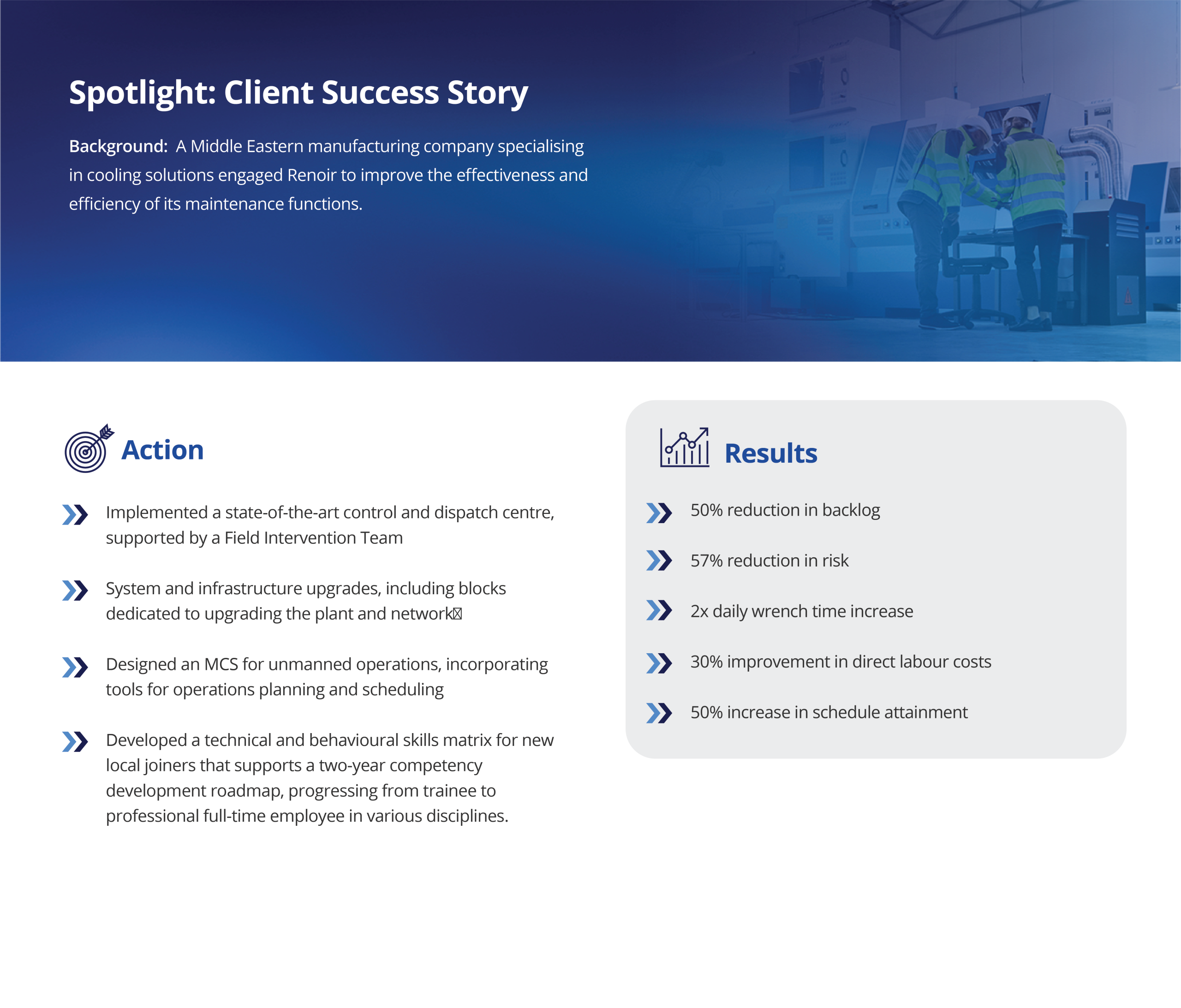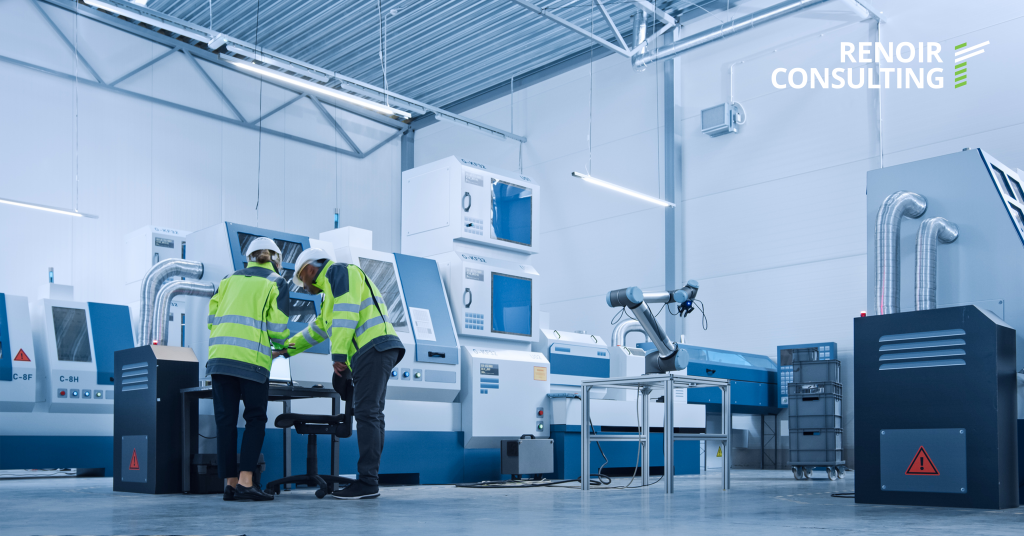Talent, Technology and Localisation Must Move Together
Manufacturing in the Middle East is at an inflection point. GCC governments are using industrial strategies and localisation policies to diversify away from hydrocarbons, while simultaneously pushing Industry 4.0 adoption. The UAE, for example, aims to more than double the industrial sector’s contribution to GDP by 2031, explicitly promoting advanced manufacturing and digital technologies to get there. Similarly, in Saudi Arabia, the Kingdom is embracing Industry 4.0 technologies under its Vision 2030 initiative. The country plans to invest $20 billion in AI by 2030.
Inside many factories, however, the reality lags the ambition. Core production and maintenance still rely on paper-based reporting, spreadsheet-driven planning, and manual approvals. Digital tools have been introduced, such as new ERPs, MES modules, and dashboards, but often as overlays on unchanged processes. The result is a “digital veneer”: technology is present, but decision-making, accountability, and daily routines still look and feel analogue.
At the same time, localisation programs such as Saudisation and Emiratisation are tightening expectations around national employment. Yet, local digital talent remains scarce, and global research indicates that skills gaps are now one of the most frequently cited obstacles to business growth in the MENA region, particularly in technology-intensive roles.
For manufacturers, this creates both pressure and opportunity. The plants that will win in this environment are those that use digital transformation to:
- Lift productivity and flexibility on the shop floor
- Create higher-value roles for local employees
- Build a management culture that can sustain continuous improvement
Three levers stand out.
1. Treat the Digital Skills Gap as a Board-Level Risk
The digital skills gap in Middle East manufacturing is no longer an HR anecdote. It is a strategic constraint. Surveys across the region show that CEOs increasingly view shortages of digital capability as a major business threat, particularly as automation, AI and data-intensive operations scale up.
For manufacturers, this plays out in instances when the maintenance teams are unable to interpret condition-based monitoring data, falling back on reactive routines or supervisors lack the skills or mandate to translate results from KPI dashboards into decisions on the line.
Addressing this requires more than ad hoc training. Leading manufacturers can:
- Build multi-skill matrices to understand what capability exists, where critical gaps are, and how to deploy people more effectively.
- Link upskilling directly to career progression and localisation targets, so national staff see a tangible pathway into technical, supervisory and analytical roles.
- Embed digital fluency into daily management routines. For example, weekly performance reviews where local managers are coached to analyse trends, challenge assumptions, and make data-backed decisions.
When capability development is tied to business outcomes and localisation objectives, not just compliance, digital skills become a core asset, not a constraint.

Improve project profitability with root cause analysis

Management system drives efficiency and contractor compliance

Cost savings through operational efficiency for manufacturer

Paper mill cuts material loss by 300% with maintenance planning
Ready for a change in your organisation?
2. Redesign Processes for Digital Efficiency, Not Just Automation
Installing new systems on top of outdated processes simply speeds up inefficiency. To capture real value, manufacturers need to re-engineer the way work flows through the plant so that digital tools amplify rather than fight operational logic.
This typically involves:
- Mapping end-to-end production, maintenance and logistics processes to expose bottlenecks, rework, and duplicated effort.
- Eliminating non-value-adding activities before they are codified into a new system. For example, studies in back-office environments generate inputs for digital transformation by highlighting redundancies and manual activities that can be automated.
- Integrating planning and scheduling so that demand, production, maintenance and manpower are synchronised — with digital tools used to model scenarios and monitor adherence.
As Industry 4.0 technologies such as AI-driven scheduling and digital twins become more accessible across the Gulf, the manufacturers that benefit most will be those that have already standardised their core processes and embedded basic performance discipline.
In this environment, localisation becomes an accelerator: local engineers and supervisors, equipped with the right skills and empowered by clear processes, can lead continuous improvement using digital tools rather than relying solely on expatriate expertise.
3. Make Adoption, Not Installation — the Measure of Success
Across the GCC, capital has been invested in ERPs, planning tools, and shop-floor applications. Yet too few of these systems are used to their full potential. Digital transformation happens only when technology reshapes how work is planned, executed and controlled — day in, day out.
A more effective approach is to treat adoption as the primary KPI:
- Design management control systems (MCS) that put digital dashboards and KPIs at the centre of daily and weekly leadership routines. The MCS serves as the primary measurement tool for behavioural outputs. It also forces management to shift from passive to active supervision.
- Shift from retrospective, manual reports to near-real-time data capture and visualisation that enable immediate corrective action.
- Align IT and operations so that tools are configured around how the plant actually runs, not around generic software templates.
In practice, this means connecting existing systems — such as ERP, CRM or planning tools — to simple, role-specific views for planners, production supervisors, maintenance leads and supply chain teams. To ensure the sustainability of the new ways of working and prevent the organisation from reverting to old habits once external support leaves, local employees are trained to become the new internal experts. Behavioural audits can be used as a tool to objectively identify the stage of change people were in to drive results.

The manufacturer’s (case study above) digital transformation focused on transitioning operations from local management to centralised, remote plant operation using advanced digital and technical tools. This transformation was critical for adapting to a growing asset portfolio and improving operational efficiency.
For manufacturers across the region, bridging the gap between digitalisation and digital transformation is fundamental to competitiveness and resilience. By closing the digital skills gap, aligning localisation with higher-value roles, and redesigning core processes for digital efficiency, leaders can turn technology investments into measurable performance gains and long-term capability.
Renoir has delivered more than 200 digital transformation projects worldwide, including multiple implementations in the Middle East manufacturing. Our hands-on, implementation-led approach works alongside client teams through task forces and Management Action Teams (MATs) to build ownership, shift behaviours, and sustain results long after the project ends.
Do you need help to align upskilling, localisation and digital transformation in your manufacturing business?










